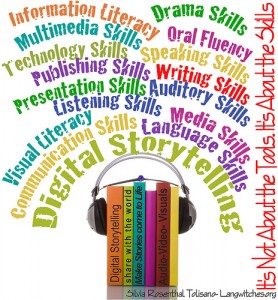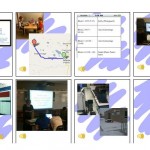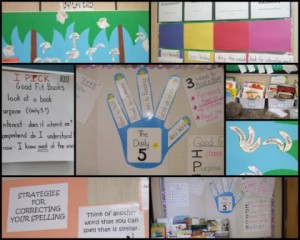Learning Centered I think what Anderson argues, relationships first and differentiated instruction, is at the heart of any instructional setting. The online environment makes it particularly difficult therefore you must be purposeful in getting to know your students. My limited online experience has been learner centered but more because adult learners will make it about the learning. We will go on tangents, use prior knowledge and forge relationships we deem valuable. In my experience with young adults is that I need to employ a variety of tools (different modes of communication, pre-testing, face to face if possible) to engage learners and scaffold their construction of knowledge from their starting point.
Knowledge Centered Anderson’s idea of “grow your own knowledge” (Anderson 2008) and making connections is key to a knowledge centered environment. Informational is prolific, how do we make it our own? A skilful teacher will get students to reach out and interact with the information until it becomes a part of what they do. I do find that the E-Learning toolkit does that for me. There is a ton of knowledge there, but because I can use the tools to construct what I need for my context, I am engaged and making the connections with this material.
Assessment Centered Anderson asserts that “assessment that serves to motivate, inform and provide feedback.” (Anderson 2008) which is a tall order in any instructional context. I have found my most successful technology mediated lesson put students in the assessment drivers seats. Using forums, lightbox galleries and databases in moodle to allow students to self and peer assess/comment does more for motivation and informing learning than any multiple choice test I could give. I know that for this course I spend extra time and care preparing these responses because I know that peer assessment and feedback will follow, it is definitely a motivator!
Community Centered In my experience even 2 years ago having “students work together in an online learning context to collaboratively create new knowledge” (Anderson 2008) was difficult. Today with the Skype, google docs, elluminate, etherpade, live meeting, Facebook, Twitter and the list goes on and on, you need but only choose the right tool for the job. Today I belong to a number of online learning communities (through Twitter mostly) that I have never met in real life, I learn from everyday, we work together without giving a second thought and they are my go to group to bounce new ideas off of. They are my community of teachers and I have a deeper relationship with many of them than the ones I know in real life.
How might you use the learning technologies tools you have at your disposal to help you to create meaningful interactions?
Tools, tools, tools there are so many to choose from. The trick is to purposively pick the ones that are “cost and learner effective” (Anderson 2008) that create quality learning environment. (Although I really just want to use the shiney new one) Elluminate, since we have a license, with its video capability, polling, whiteboard, chat and desk top sharing is at the top of my list right now. When delivering instruction I make sure to build in introductions, sharing and interactivity along the way. Forums when set up properly can facilitate excellent opportunities for interactions. At the junior high level I find that I have to do a lot of modelling of interactions before there is a buy in. Blogging also has the potential, personally I know that I have made many long last relationships via a great blog post. For that to translate to k-12, I think will take more teacher modelling. Personally, twitter is also incredibly meaningful, however I am having trouble convincing and showing others. At the heart of creating meaningful interactions has to be a safe, welcoming collaborative online space. For me that has to be moodle because that is the LMS of our district. This space has a place for student images, feedback and it changes depending on what we are doing and what my students want. By giving up a some control this space it becomes our space to learn not my space to teach.
Anderson, T. (2008). Towards a Theory of Online Learning. In: T. Anderson & F. Elloumi (Eds.), Theory and Practice of Online Learning. Edmonton AB: Athabasca University. Accessed online October 10 2010 http://www.aupress.ca/books/120146/ebook/02_Anderson_2008_Anderson-Online_Learning.pdf





 collages. Now I don’t have to do it on my phone. The third feature, which I need to spend more time exploring was the movie creation. Could this be a tool that is more stable than Windows Movie Maker? I will need to add this to my to-do list.
collages. Now I don’t have to do it on my phone. The third feature, which I need to spend more time exploring was the movie creation. Could this be a tool that is more stable than Windows Movie Maker? I will need to add this to my to-do list.